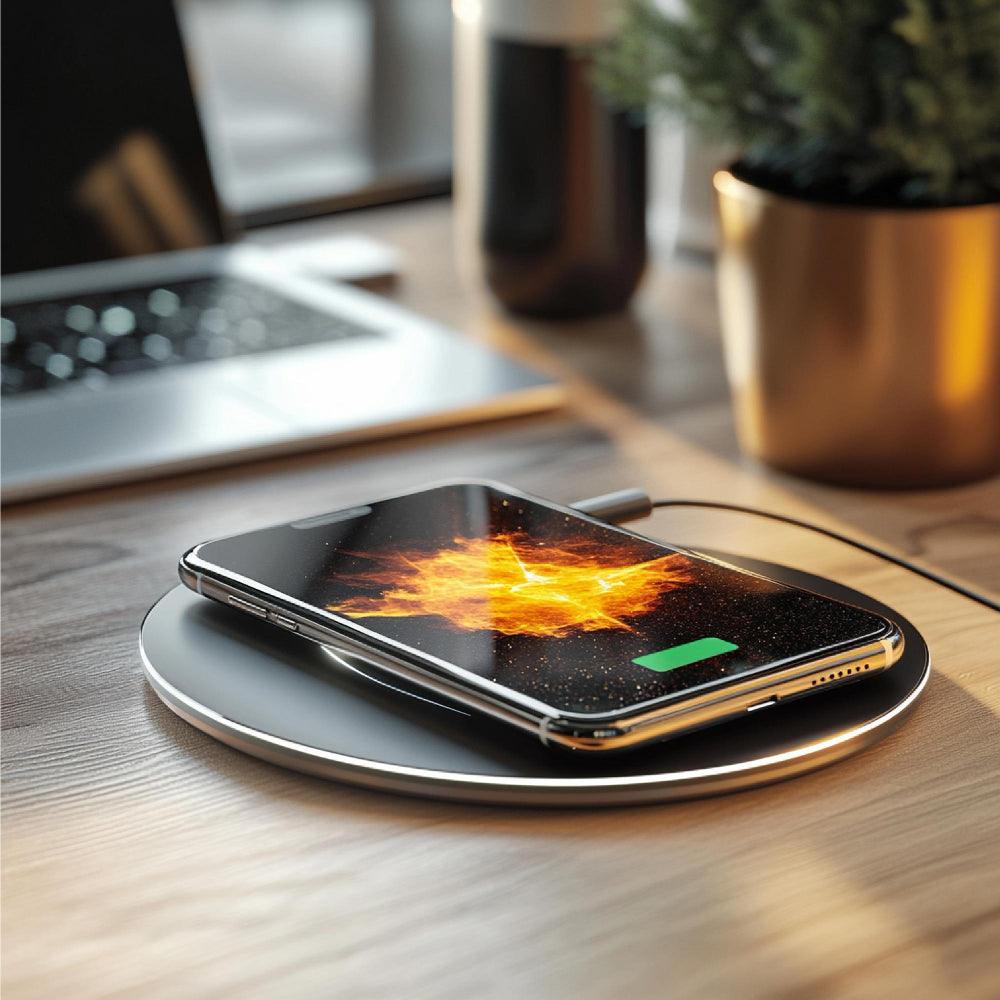
Why Does Wireless Charging Get Hot? Understanding the Causes and Solutions
Share
Wireless charging is a convenient and modern way to power up your devices without dealing with messy cables. However, many users notice their phones or charging pads getting warm—or even hot—during the process. So, why does wireless charging get hot? Is it normal, or should you be concerned? Let’s explore the causes, safety concerns, and solutions to keep your device cool and safe.
Why Does Wireless Charging Get Hot?
Wireless charging generates heat due to the electromagnetic induction process. Here’s how it works:
- The charging pad creates an electromagnetic field.
- Your phone’s receiver coil converts this field into electricity to charge the battery.
- During this energy transfer, some power is lost as heat, causing the device and charger to warm up.
Key Reasons for Heat Generation:
- Energy Loss: Wireless charging is less efficient than wired charging, with more energy lost as heat.
- Misalignment: If your phone isn’t perfectly aligned with the charging pad, the system works harder, generating more heat.
- Thick or Metal Cases: Thick phone cases or cases with metal components can interfere with the energy transfer, causing overheating.
- High Power Output: Fast wireless chargers (10W or higher) tend to produce more heat compared to standard chargers.
- Ambient Temperature: Charging in a hot environment can amplify the heat produced during wireless charging.
Is It Normal for Wireless Charging to Get Hot?

Yes, it’s normal for wireless charging to produce some heat. However, excessive heat could indicate an issue that needs attention. Here’s how to differentiate:
- Normal Heat: Slight warmth on your phone or charging pad is expected, especially after extended charging sessions.
- Excessive Heat: If your phone becomes too hot to touch or shows overheating warnings, this could damage your battery and affect performance.
How to Reduce Heat During Wireless Charging
If you’re experiencing excessive heat while using wireless charging, here are some practical solutions:
1. Use a High-Quality Charger
- Invest in a Qi-certified wireless charger from trusted brands like Belkin, Anker, Faurax, or Mophie.
- Avoid cheap, uncertified chargers that may lack proper heat management.
2. Align Your Device Properly
- Ensure your phone is centered on the charging pad. Misalignment forces the charger to work harder, creating more heat.
3. Remove Phone Cases
- Take off thick or metal-backed cases before charging.
- Use a wireless charging-friendly case if you prefer to keep your phone protected.
4. Charge in a Cool Environment
- Avoid charging in direct sunlight or hot rooms.
- Place the charger on a flat, ventilated surface to allow heat to dissipate.
5. Opt for Lower Power Chargers
- If fast wireless charging causes excessive heat, switch to a standard (5W or 7.5W) charger for cooler operation.
Is Wireless Charging Safe Despite the Heat?
For most users, wireless charging is completely safe, even if it generates some heat. However, here are a few things to keep in mind:
Impact on Battery Health
- Heat is a known enemy of lithium-ion batteries. Prolonged exposure to high temperatures can degrade your phone’s battery over time.
- To minimize this risk, avoid charging overnight or using fast wireless chargers excessively.
Risk of Fire or Damage
- While rare, faulty chargers or improper usage can pose risks. Always use certified chargers and follow manufacturer instructions.
Comparison: Wireless Charging vs. Wired Charging
If you’re wondering whether wireless charging is worth it despite the heat, here’s a quick comparison:
| Feature | Wireless Charging | Wired Charging |
| Convenience | No cables, easy to use | Requires cables and ports |
| Efficiency | Less efficient, generates more heat | More efficient, less heat |
| Speed | Slower (unless using fast chargers) | Generally faster |
| Heat Generation | Higher due to energy loss | Lower heat production |
While wired charging is more efficient and cooler, wireless charging offers unmatched convenience for casual use.
FAQs About Wireless Charging and Heat
1. Why does my phone get hot but not the charging pad?
- This happens because your phone’s receiver coil is working harder to convert the electromagnetic field into electricity.
2. Can wireless charging damage my phone?
- Not directly, but excessive heat can harm your battery over time. Use certified chargers and follow best practices to minimize risks.
3. Do all wireless chargers cause heat?
- Yes, all wireless chargers produce some heat, but high-quality chargers manage heat better than cheaper alternatives.
Conclusion: Should You Be Worried About Heat During Wireless Charging?
While it’s normal for wireless charging to generate some heat, excessive overheating can be a problem. Understanding the causes and adopting the right practices—like using certified chargers, aligning your device, and charging in a cool environment—can help you enjoy the convenience of wireless charging without compromising safety or performance.If you’re looking for reliable wireless chargers with excellent heat management, check out trusted brands like Belkin, Anker, Faurax, or Mophie. Keep your devices cool, and charge smarter!
